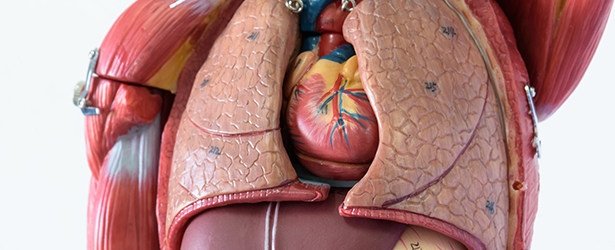TRANSPORTING TRANSPLANTS
We’ve written lots of stories about how growth in a particular industry will many times fuel improvements in the methods that industry uses to ship its product. This is a story about what happens when improvements in the methods to ship a product fueled growth in a particular industry—in this case, the life-giving business of organ transplants which, over the past 10 years, has gone from something that could only be done with both parties in very close proximity to today where organs can and are shipped around the world.
- The first successful organ transplant was of a kidney in 1954. The donor and recipient were identical twins—Ronald and Richard Herrick—and one of the doctors who performed the transplant, Dr. Joseph Murray, would later win the Nobel Prize for Medicine.
- What Murray and his team were up against was something doctors, donors and recipients would be dealing with decades later: the challenge of not only finding donor organs, but donor organs that were compatible to the recipient AND that were physically so near that they could be transplanted quickly enough to remain medically viable.
- Basically, you had to hope that the recipient and donor either lived very close, could be brought together in the hospital or were identical twins who were still on speaking terms after what they said to each other at Thanksgiving.
- That began to change in the 1990s after Folkert Belzer and James Southard developed a solution for the cold storage of organs. Trademarked as Viaspan (and commonly known as UW solution since it was developed at the University of Wisconsin), the solution elongated the time and distance that kidneys, livers, hearts, etc. could be shipped—six hours for hearts and lung, up to 12 hours for pancreas and liver and a maximum of 35 hours for kidneys.
- The kidney is the most common organ to transplant, owing to exploding diabetes numbers. In fact, it’s estimated that 26 million Americans—about 1 in 9—have kidney disease and most are completely unaware.
- Further innovation came this century from organizations such as South Carolina-based Bridge to Life, which uses the UW solution to facilitate organ transplants. “When the UW solution was first developed it needed to be refrigerated from the time of manufacturing until use,” says Bridge to Life CEO Stevan Schweighardt. “What we have done at Bridge to Life is develop new packaging for the solution that allows it to be stored at room temperature for two years. The original had a shelf life of one year.”
- Though Bridge to Life has only been operational since 2009, the organization is now in 34 countries “in every part of the world: Europe, Japan, China, India,” Schweighardt says. “We’ve grown remarkably. It’s not a huge market but it is a very important need.”
- Important validation for the likes of Bridge to Life came in 2011 when transplant surgeon Dr. Dorry L. Segev wrote in the American Journal of Transplantation that “shipping live donor kidneys is perfectly safe and facilitates more transplants.” Segev had reached this conclusion after studying 56 kidney transplants that traveled an average distance of 792 miles, with a maximum distance of 2,570 miles.
- Even with all those innovations and good data, the wait for a kidney is usually measured not in weeks but years. A novel approach to quickening that time has developed recently through the use of organ exchanges and chains which works like an elaborate, life-giving game of post office.
- It works like this: If you need a kidney but none of your friends and loved ones are matches, one of them agrees to donate a kidney on your behalf. That kidney is checked against a database for a potential match as donor organs in other areas are being checked for compatibility with you and, hopefully, donors and recipients can eventually be connected in a chain that benefits everyone.
- In 2015, the longest kidney transplant chain in the U.S. was completed, encompassing 34 kidneys sent between 26 hospitals.
- So, the future for transplantation is bright and may just get turned on its head by new technology.
- Massachusetts-based TransMedics defies the old notion of transporting organs on ice. The company’s Portable Organ Care System keeps organs warm by pumping blood, nutrients and fluids through them—the hope being that this process will facilitate not only the speed by which an organ becomes useable in the body but further lengthens the time organs are viable, thereby greatly expanding the pool of organs. The system, undergoing trials here in the U.S., is awaiting approval by the Food and Drug Administration.





Leave a Reply